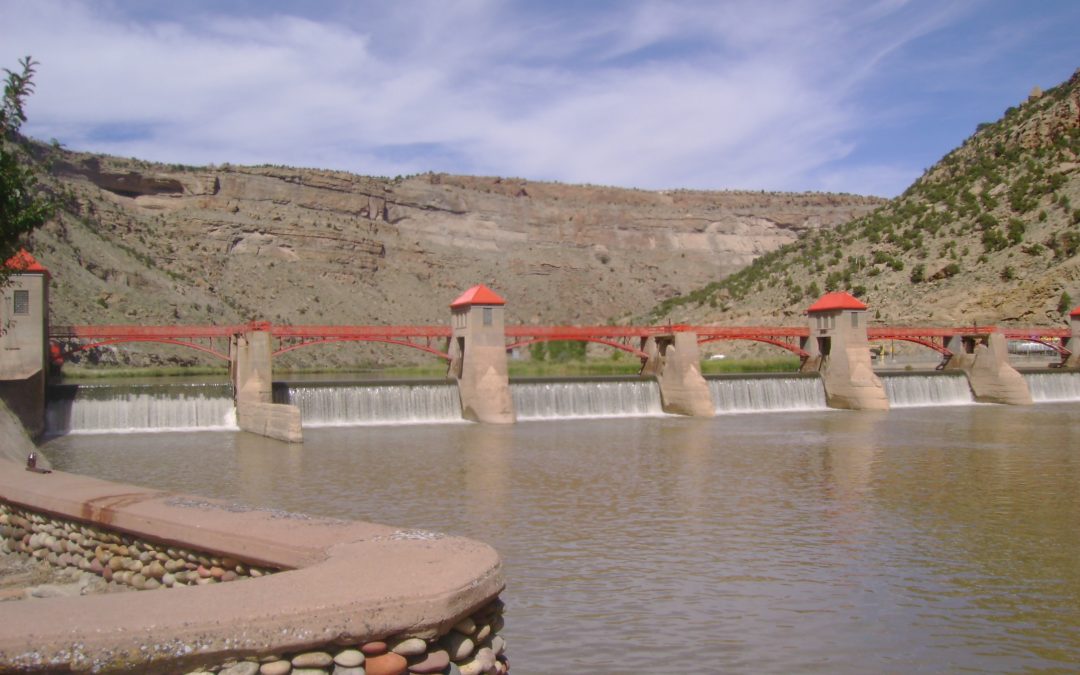Should large Colorado water users—farmers and cities—sign on to a voluntary program that would pay them to set aside water for a special drought protection pool in Lake Powell?
That’s the question that will come before dozens of water managers, farmers, city officials and environmental groups next week as part of a two-day statewide planning effort to determine whether such a program is desirable and doable.
“There is some really good work we plan to dive into,” said Greg Johnson, head of water supply planning at the Colorado Water Conservation Board, the state’s lead water policy agency. (Editor’s note: Johnson sits on the board of Water Education Colorado, the policy-neutral nonprofit responsible for the Fresh Water News initiative.)
The Colorado River is a major source of the state’s water, with all Western Slope and roughly half of Front Range water supplies derived from its flows.
But growing populations, chronic drought and climate change pose sharp risks to the river’s ability to sustain all who depend on it. The concept behind the drought pool is to help reduce the threat of future mandatory cutbacks to Colorado water users under the terms of the 1922 Colorado River Compact should the river reach a crisis point.
The latest confab comes just over a year into an effort to determine if Colorado should help fill a newly authorized, protected drought pool in Powell through voluntary, proactive reductions in water use that are referred to as “demand management.”
The proposal has caused concern among different user groups, including farmers. Because growers consume so much of the state’s water, they worry that they are the biggest target for water use reductions, which could directly harm their livelihoods if the program isn’t implemented carefully and on a temporary basis.
Colorado work groups studying such topics as agricultural impacts, education, monitoring and measuring, the environment and law, have been meeting for the past six months to identify the issues and potential solutions. Next week these groups will share their preliminary findings with one another and the public.
It is a significant moment in drought planning in Colorado and elsewhere, officials said. In early 2019 the seven states that comprise the Colorado River Basin—Arizona, California and Nevada in the Lower Basin, and Colorado, New Mexico, Utah and Wyoming in the Upper Basin—agreed for the first time to a series of steps, known as the Colorado River Basin Drought Contingency Plan, to help stave off a crisis on the river.

Colorado River Basin: Credit: Chas Chamberlin
In the Upper Basin, the plan includes the new drought pool, additional investments in weather modification, as well as authorization for flexible water releases from reservoirs in the Upper Basin, including Flaming Gorge in Wyoming and Utah, Blue Mesa in Colorado, and Navajo, which straddles Colorado and New Mexico, if that water is needed to boost water levels in Lake Powell.
The Lower Basin states this year have for the first time begun cutting back water use in accordance with the drought plan in an attempt to keep Lake Mead from falling too low. But the Upper Basin states are still finalizing their plans with regard to demand management and seeking consensus among water users, the public, and, ultimately, each other about the best way to proceed.
Andy Mueller is general manager of the Glenwood Springs-based Colorado River District and is participating in the process. He said he’s hopeful the gathering will allow everyone’s ideas to be shared, but he said there is more work to be done and that the issue is a daunting one.
“The meetings have been productive. But it’s still an open question whether a demand management program will ever roll out. Given the complexities and the cost, we have to make sure that if a program moves forward it is done in a way that protects all of the interests and communities affected by it,” Mueller said.
Russell George is chair of Colorado’s Inter Basin Compact Committee, a state-chartered group designed to facilitate discussions among Colorado’s nine Basin Roundtables, which represent the state’s eight major river basins plus the metro area.
“This is a hallmark moment of progress on what Colorado has been working on,” George said. “The whole concept has been to recognize that decisions on issues in one part of the state will affect water issues in other parts of the state. Historically decisions weren’t made with a statewide conversation. They were done by stakeholders whose projects had a specific purpose.”
The meetings, to be held March 4 and 5 at Sheraton Denver West at 360 Union Blvd. in Lakewood, are open to the public and opportunities for public comment will be provided, George said.
Agendas can be viewed here. For more information, contact Sara Leonard at the Colorado Water Conservation board at 303-866-3441, ext. 3242 or at sara.leonard@state.co.us.
Jerd Smith is editor of Fresh Water News. She can be reached at 720-398-6474, via email at jerd@wateredco.org or @jerd_smith.
Fresh Water News is an independent, non-partisan news initiative of Water Education Colorado. WEco is funded by multiple donors. Our editorial policy and donor list can be viewed at wateredco.org.


 Print
Print